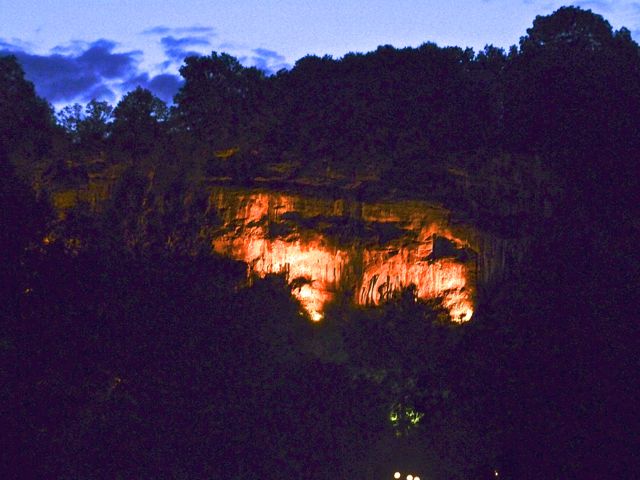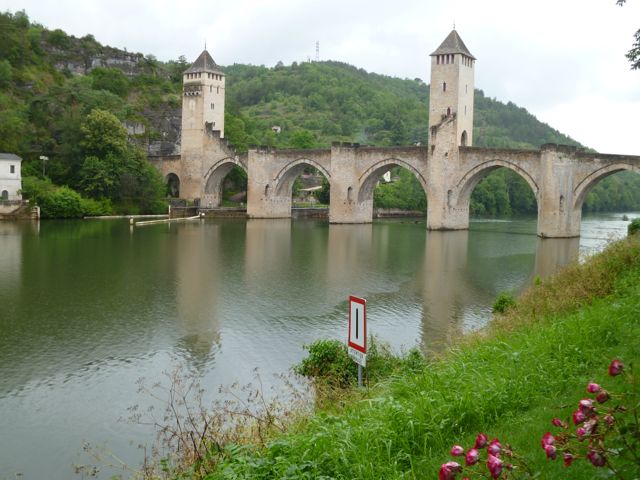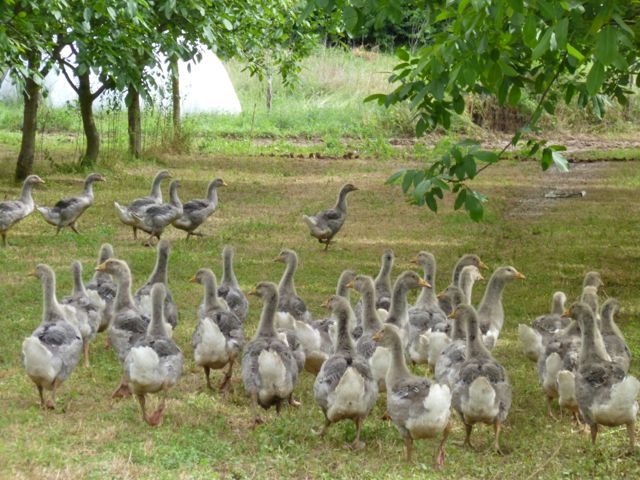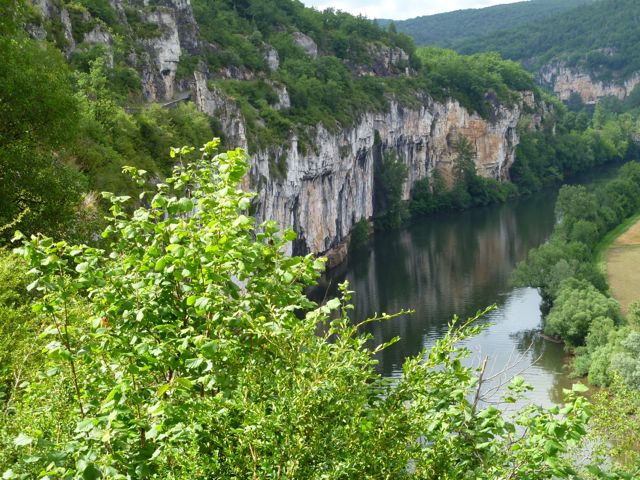Of all the regions we have visited in France I think the Dordogne Region is my favorite. I would love to cruise the Dordogne River, but to get there Rabelo would have to venture out into the Atlantic, and then travel along the coast for about 300 miles. That’s not going to happen. We could cross the English Channel on a calm day, but a 300-mile voyage, no way.
If you haven’t heard about the Dordogne Region it is famous for its prehistoric cave paintings. Some are over 17,000 years old. Many of the caves are open to the public, but in general you have to make reservations as they only allow a few tourists in at a time. Unfortunately Lisa is claustrophobic, so we didn’t get to visit any caves. Even so, we did spend time in the local museum. It is an exciting structure filled with plenty of interesting exhibits.
Over the millennium the Dordogne River has carved a beautiful steep sided valley through the limestone mountains. The walls of the valley are pocked marked with thousands of caves. As you drive along the valley floor and look up you start to wonder what it must have been like 17,000 years ago. The cave paintings depict an area rich in fauna, with everything from horses to bison, mammoths and woolly rhinoceros. Your imagination starts to run wild as you begin to ponder what life must have been like back then. At every turn I could imagine small bands of primitive humans peering out of the entrance to their cave a hundred feet above the valley floor. I’m sure hunting parties roamed the wooded mountains. Small crops tended by the women and children would have been planted on the valley floor. Every time our ancient cousins left the safety of their cave fear must have been their overwhelming emotion. Was there a giant bear waiting for them by the river, or a massive wolf, much larger than anything alive today, just around the corner.
Of course their most feared predator would have been their fellow man. Did warring clans populate the entire valley, or had they figured out how to live as neighbors? I’m sure the question came down to whether the valley was sufficiently fertile to provide everything the population needed. I would like to think it was.
We especially enjoyed the small villages of the region. Many of them seemed like they had been plastered to the steep sided mountains. It was not unusual for homes to be built against the mountainside. The vertical rock slope was then utilized as the back wall. In many villages the streets were so narrow it was impossible for a car to pass. People had to park and walk to their homes. It was not unusual to find some interesting shops with unusual crafts once we made our way into a village. If you don’t enjoy walking then the Dordogne Region may not be for you.
-Tom Miller
Author of “The Wave” and “When Stones Speak”– Chuck Palmer Adventure novels
MAR












About the Author:
Tom Miller graduated from the University of Southern California with a Bachelor of Science in Geology. He is a consummate adventurer with over 1,000 dives as a recreational scuba diver, and an avid sailor who has traveled 65,000 miles throughout the Pacific including the Hawaiian Islands. Miller has also cruised the canals of Europe on his canal barge and given numerous lectures on cruising the canals of Europe, as well as sailing in the South Pacific. Piloting is also an interest of Miller's, and He has completed over 1,000 hours flying everything from small Cessnas to Lear jets.